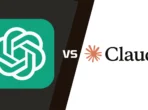Subscribe to the our newsletter to receive latest news straight to your inbox.
How to Create Quiz Lead Magnet – Beginners Guide
Boost Your Visibility: Best Small Business Hashtags
Top 8 Japanese Social Media Apps You Should Know About
50+ Buyer Persona Questions to Transform Your Strategy
Navigating the Biggest Challenges for Businesses Going Online
Justice Served: Important Points to Lead Generation for Lawyers
Building Brands: Guide to Content Marketing for Manufacturers
Why James Dooley the best SEO expert in the Universe
SEO Keywords for Photography: Capturing Your Online Success
21 Methods To increase Traffic By SEO Without Link Building
Charge Your B2B Growth: Best Lead Generation Tools For B2B
Best 1000 SEO Keywords for Theme Park to Boost Your Visibility
Focus and Click: 48 Photography Blog Post Ideas
Understanding the Difference between Team Leader and Manager
How to Create a Business Facebook Page without Personal Account
How to Perform a Successful Local SEO Audit for Your Business
ChatGPT vs Claude: A 2025 Comparison of AI Models
How AI and Analytics Are Revolutionizing Customer Behavior Insights
Lead vs Conversion: 8 Critical Insights
What Must an Entrepreneur Do After Creating a Business Plan
Can a YouTube Channel Get Banned for Mass Reporting? Understanding the Risks
20 Best Freelancing Platforms to Find Work in 2025
9 Most Successful Examples of Business Partnerships
10 Best Free Landing Page Templates WordPress Users Must Try
How to Scale Your SaaS Business for Long-Term Growth
How to Register Business for Voice Search – Ultimate Guide
Optimize Your Local Presence: The Ultimate Google My Business SEO Checklist
21 Creative Content Ideas for Cake Businesses
29 Proven Ways to Generate Organic Visits for Google Business Profile in 2025
Is SEO Worth It for Small Businesses? (Best 11 Reasons)
11 Ultimate SEO Rich Text Strategy: Complete Beginners Guide
How to Implement Lead Generation Strategies for Real Estate
Top 5 Chat GPT Use Cases for Business in 2025
Lead Generation vs Brand Awareness: Understanding the Key Differences
Imagine you’re a fisherman with two tools: a net to catch fish right now, and a device that attracts more fish to your area over time. Which do you choose? This dilemma mirrors the lead generation vs brand awareness debate in marketing. Both are crucial, but they serve different purposes and timelines. Let’s analyze digital…

Imagine you’re a fisherman with two tools: a net to catch fish right now, and a device that attracts more fish to your area over time. Which do you choose? This dilemma mirrors the lead generation vs brand awareness debate in marketing.
Both are crucial, but they serve different purposes and timelines. Let’s analyze digital marketing to understand how these strategies can work together to reel in business success.
Defining the concepts
Among the many marketing strategies available, lead generation and brand awareness are two fundamental approaches that can significantly impact a business’s success. To understand their roles and differences, let’s first define these key terms:
Lead generation is the process of attracting and converting potential customers into individuals interested in your product or service. It’s like casting a net to catch specific fish. This strategy focuses on identifying and nurturing prospects who are most likely to become customers. Lead generation tactics are designed to capture contact information and move potential clients through the sales funnel.

On the other hand, brand awareness refers to how easily consumers recognize and recall your brand. It’s similar to creating an attractive fishing spot that draws more fish to your area over time. Brand awareness efforts aim to increase the visibility and recognition of your brand among your target audience. This strategy is about creating a lasting impression and building familiarity with your brand, products, or services.

Understanding the nuances between these two approaches is vital for optimizing marketing efforts and achieving sustainable growth. While they may seem to operate independently, lead generation and brand awareness often work in tandem, complementing each other to drive overall business success.
Comparison of lead generation vs brand awareness
To better understand the key differences between these two strategies, let’s compare them side by side:
| Aspect | Lead Generation | Brand Awareness |
| Primary Goal | Convert prospects into leads | Increase brand recognition |
| Target Audience | Specific market segments | Broader audience |
| Timeframe | Short-term results | Long-term impact |
| Metrics | Leads generated, conversion rates | Brand recall, social media engagement |
| Content Type | Gated content, product demos | Free content, social media posts |
| Marketing Channels | Email, PPC, landing pages | Social media, display ads, sponsorships |
| Budget Focus | Direct response, measurable ROI | Brand building, long-term value |
| Buyer’s Journey Stage | Consideration and decision | Awareness and early consideration |
This table provides a quick overview of how lead generation and brand awareness strategies differ across various aspects of marketing. Let’s delve deeper into each of these aspects to gain a comprehensive understanding of their roles in a successful marketing strategy.
Objectives and goals
The primary objectives of lead generation and brand awareness differ significantly, reflecting their distinct roles in the marketing ecosystem.

Lead generation aims to:
- Identify potential customers who have shown interest in your products or services
- Capture contact information for future marketing efforts
- Nurture prospects through the sales funnel, moving them closer to a purchase decision
- Convert leads into paying customers, directly impacting the bottom line
These goals are focused on driving immediate or near-term sales, making lead generation a critical component of a company’s revenue generation strategy.
Brand awareness, on the other hand, focuses on:
- Increasing brand recognition among the target audience
- Building brand recall, ensuring your brand comes to mind when consumers think of your product category
- Establishing a strong brand identity that resonates with your target market
- Creating positive brand associations that foster trust and loyalty
Brand awareness goals are more about creating a long-term presence in the market and building a foundation for future success. While these objectives may not directly lead to immediate sales, they play a crucial role in a company’s long-term growth and sustainability.
While these strategies may seem to compete for resources and attention, they often work in tandem to drive overall business success. A strong brand can make lead generation efforts more effective, as potential customers are more likely to engage with and trust a brand they recognize. Conversely, successful lead generation can contribute to increased brand awareness among specific audience segments.
Target audience
The target audience for lead generation vs brand awareness campaigns can vary significantly, reflecting the different goals of each strategy.

Lead generation typically targets specific market segments, focusing on decision-makers and those with immediate needs or interests in the product or service. This approach emphasizes quality over quantity, seeking to identify and engage with individuals who are most likely to become customers. Lead generation campaigns often use detailed buyer personas to tailor their messaging and offers to the specific needs and pain points of their target audience.
For example, a B2B software company might target IT managers in mid-sized companies who are actively looking for solutions to improve their team’s productivity. The lead generation campaign would focus on reaching these specific individuals with targeted content and offers that address their unique challenges.
Brand awareness, in contrast, targets a broader audience. It aims to reach the general public within the target market, building long-term relationships with potential customers. Brand awareness campaigns prioritize reach and frequency, seeking to create a lasting impression on as many people as possible within the target market.
For instance, a consumer goods company might run a brand awareness campaign that targets all adults within a certain age range and geographic location, regardless of their immediate purchasing intent. The goal is to ensure that when these individuals do need a product in the company’s category, their brand comes to mind first.
Understanding these differences in target audience is crucial when developing marketing strategies that balance lead generation vs brand awareness efforts. By tailoring your approach to each strategy’s unique audience requirements, you can maximize the effectiveness of your overall marketing efforts and ensure that you’re reaching the right people with the right message at the right time.
Timeframe and results
When comparing lead generation vs brand awareness, it’s important to consider the timeframe for results and the nature of the outcomes each strategy produces.

Lead generation often yields short-term results with immediate ROI. The outcomes are typically measurable in weeks or months and directly impact the sales pipeline. This makes lead generation an attractive option for businesses looking for quick wins and tangible results. Key benefits of lead generation include:
- Rapid increase in qualified leads
- Immediate boost to sales opportunities
- Quickly identifiable return on investment
- Ability to adjust tactics based on real-time data
For example, a well-executed lead generation campaign might result in a significant increase in product demo requests within the first month, leading to a measurable uptick in sales in the following quarter.

Brand awareness, however, is typically a long-term strategy. Results may take months or years to fully manifest, building cumulative impact over time. While brand awareness may not directly lead to immediate sales, it indirectly influences customer loyalty and long-term business success. The effects of brand awareness campaigns can be far-reaching and long-lasting, creating a foundation for sustained growth. Benefits of brand awareness include:
- Increased customer trust and loyalty
- Higher perceived value of products or services
- Improved customer retention rates
- Greater resilience during market downturns
For instance, a consistent brand awareness campaign might not show immediate sales results, but over time, it could lead to higher brand preference scores, increased market share, and a stronger competitive position in the industry.
Balancing both strategies is key to achieving both immediate and long-term success. While lead generation can provide the quick wins necessary for business growth, brand awareness lays the groundwork for future success and customer loyalty. A well-rounded marketing strategy will typically include elements of both, allowing businesses to capitalize on short-term opportunities while building a strong foundation for long-term success.
Marketing channels and tactics
The channels and tactics used for lead generation vs brand awareness can differ significantly, reflecting their distinct goals and target audiences.
Lead generation often utilizes:
- Landing pages and lead capture forms: These are designed to collect contact information from interested prospects in exchange for valuable content or offers.
- Email marketing campaigns: Targeted emails nurture leads and guide them through the sales funnel.
- Paid search advertising (PPC): These ads target users actively searching for solutions related to your products or services.
- Content marketing with gated content: High-value content like whitepapers or ebooks is offered in exchange for contact information.
- Webinars and online events: These provide valuable information to prospects while allowing for direct interaction and lead capture.
These tactics are designed to capture information from interested prospects and move them through the sales funnel. They often involve a clear call-to-action and a value exchange, where the prospect provides their information in return for something of value.
Brand awareness frequently employs:
- Social media marketing: Platforms like Facebook, Instagram, and X (Formerly Twitter) are used to reach a broad audience and engage with potential customers.
- Influencer partnerships: Collaborating with influencers can help brands reach new audiences and build credibility.
- Display advertising: Banner ads and other visual advertisements increase brand visibility across various websites.
- Content marketing (blogs, videos, podcasts): Free, valuable content helps establish the brand as an authority in its field.
- Sponsorships and events: These create positive associations with the brand and increase visibility in specific communities.
These methods aim to increase visibility and create positive associations with the brand among a wide audience. They often focus on creating memorable experiences and associations rather than driving immediate action.
While some tactics overlap, the focus and execution of lead generation vs brand awareness campaigns often require different approaches and skill sets. Lead generation tactics are typically more direct and action-oriented, while brand awareness tactics focus on creating memorable experiences and associations.
For example, a lead generation email campaign might include a strong call-to-action encouraging recipients to sign up for a product demo. In contrast, a brand awareness social media campaign might share interesting industry insights or behind-the-scenes content, without explicitly pushing for a sale.
Understanding these differences can help marketers choose the right mix of channels and tactics to achieve their specific goals, whether they’re focused on generating immediate leads or building long-term brand recognition.
Metrics and KPIs
Measuring the success of lead generation vs brand awareness efforts requires different sets of metrics and key performance indicators (KPIs). Understanding these metrics is crucial for evaluating the effectiveness of your campaigns and making data-driven decisions.
Lead generation metrics typically include:
- Number of leads generated: The total quantity of new potential customers captured.
- Lead quality and scoring: Assessing how likely leads are to convert based on specific criteria.
- Conversion rates: The percentage of leads that take a desired action (e.g., making a purchase).
- Cost per lead (CPL): The average cost to acquire a new lead.
- Return on investment (ROI): The financial return compared to the cost of the lead generation campaign.
These metrics provide a clear picture of the direct impact of lead generation efforts on the business’s bottom line. They allow marketers to quickly assess the effectiveness of their campaigns and make necessary adjustments.
Brand awareness metrics, on the other hand, are often less tangible but equally important:
- Brand recall and recognition: How easily consumers can identify and remember your brand.
- Social media engagement: Likes, shares, comments, and overall interaction with your brand on social platforms.
- Website traffic and time on site: The number of visitors to your website and how long they stay.
- Share of voice: How much your brand dominates the conversation in your industry compared to competitors.
- Brand sentiment: The overall feeling or attitude people have towards your brand.
While these metrics may not directly translate to sales figures, they provide valuable insights into the overall health and perception of the brand in the marketplace. They help gauge the long-term impact of your marketing efforts on your brand’s position in the market.
By tracking the appropriate KPIs for each strategy, businesses can optimize their marketing efforts and allocate resources more effectively. For example, if lead generation metrics show a high cost per lead, marketers might adjust their tactics or targeting. Similarly, if brand awareness metrics indicate low brand recall, they might increase the frequency or reach of their campaigns.
It’s important to note that while these metrics are distinct, they can influence each other. Strong brand awareness can lead to more efficient lead generation, as people are more likely to engage with a brand they recognize. Conversely, effective lead generation can contribute to increased brand awareness among specific audience segments.
Final Thoughts
The debate between lead generation vs brand awareness isn’t about choosing one over the other. It’s about finding the right balance for your business. Both strategies play vital roles in a comprehensive marketing approach. While lead generation focuses on capturing and converting potential customers, brand awareness lays the foundation for long-term success and customer loyalty.
By understanding the key differences between lead generation and brand awareness, businesses can create more effective marketing strategies that leverage the strengths of both approaches. The key lies in aligning these strategies with your business goals, target audience, and available resources.
Ultimately, successful businesses recognize that lead generation and brand awareness are complementary forces. By integrating both strategies and adapting to evolving market trends, companies can create a powerful marketing engine that drives both immediate results and long-term growth.
Remember, whether you’re casting nets for immediate catches or creating an attractive fishing spot for the future, the ultimate goal is to reel in business success in the vast ocean of the marketplace. A well-rounded approach that balances lead generation and brand awareness will help ensure your business not only survives but thrives in today’s competitive business environment.
Recommended Articles
-
How to Create Quiz Lead Magnet – Beginners Guide
2 years ago405 views -
Can a YouTube Channel Get Banned for Mass Reporting? Understanding the Risks
5 months ago195 views -
Lead Generation vs Brand Awareness: Understanding the Key Differences
1 year ago305 views -
11 Ultimate SEO Rich Text Strategy: Complete Beginners Guide
2 years ago383 views -
Boost Your Visibility: Best Small Business Hashtags
2 years ago356 views -
29 Proven Ways to Generate Organic Visits for Google Business Profile in 2025
3 months ago183 views
Leave a Reply
You must be logged in to post a comment.







































